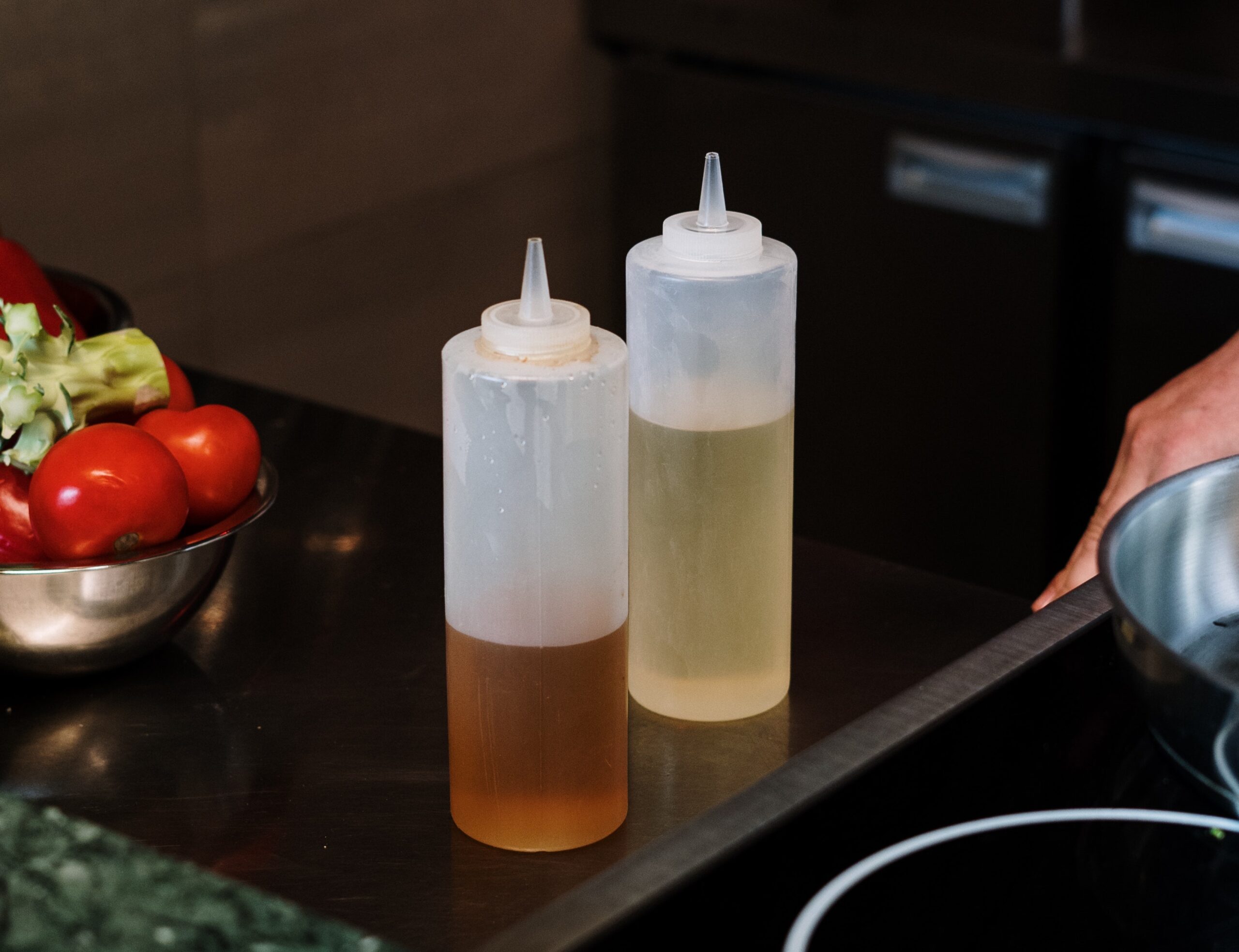Producing cooking oils uses up around 20% of the world’s cropland, demand is rising, and there are climate implications the industry needs to address. So it’s natural that conscious cooks might wonder which oil is the best choice for their searing and sautéing and salading needs.
First things first, though: While making a kilo of veggie oil produces 3.81 kg of greenhouse gas emissions on average, according to a 2022 analysis, those emissions are nowhere near as bad as for meat; an equivalent weight in poultry, for example, produces 9.9 kg, and beef 10 times that. That said, if you want to dial down the impact of your cooking fat, there are certainly things you can do.
The 2022 study, published in the journal Science of The Total Environment, found that making rapeseed (aka canola) oil emits the lowest amount of GHGs per kilo of oil produced (2.49 kg), and sunflower came in a close second. But that answer isn’t perfectly black-and-white, says study author Thomas Alcock: “There was quite a lot of variation in possible GHG emissions, depending on how the crop was produced.” While rapeseed oil wins out in terms of average GHGs, palm oil uses less land than many other oil crops—but it drives deforestation and releases tons of methane during the pressing stage of production. Soybean oil, the only ingredient in Wesson vegetable oil, is the highest emitter at 4.25 kg per kilo.
Then there are oils not accounted for in that analysis, nor one from 2015 that had similar results. Coconut oil, for instance, is growing in popularity but making it leads to considerable deforestation. Even olive oil, which is what Americans reach for most often, has its downsides. With more than 750 million olive trees cultivated around the world, eco concerns center on soil erosion, a huge demand for water, and chemical pesticides and fertilizers—unless it’s organic.
Yup, it’s complicated. So what’s a sustainability-minded home cook to do?
Ditch animal fats. We cannot say this enough: The best dietary thing you can do for the planet is avoid animal products—in this case butter and lard—whenever you reasonably can, because the emissions from raising livestock are the worst.
Opt for rapeseed. On average, canola has the lowest profile of the five most popular cooking oils in terms of straight-up greenhouse emissions. It’s very low in saturated fat, and its neutral flavor and high smoke point make it ideal for all kinds of cooking.
Conserve your good olive oil. Look for olive oil bottles labeled organic, first cold pressed, and extra-virgin. (Non-virgin oil is the result of a process that uses chemical solvents to pull what’s left out of the olive pulp and pits after the first pressing.) It’s got a very low smoke point, so consider saving it for salads and for drizzling on finished dishes rather than using it for everyday cooking.
Only buy and use what you need. With any oil, get only what you’ll use in the short term, and store it in a cool place in a dark vessel—or at least away from sunlight and your stove. Exposure to light, heat, and air turn oil rancid fairly fast. If it smells off or feels tacky, toss it. Thinking about deep-frying? Might we suggest shallow pan-frying instead.
Tell companies what you want. There are cultivation practices that help lower emissions, like no-till farming, but they aren’t something a customer can typically see on a label. “The best thing consumers could do is demand greater transparency of GHG emissions produced across a product’s life cycle on the product packaging,” says Alcock.

